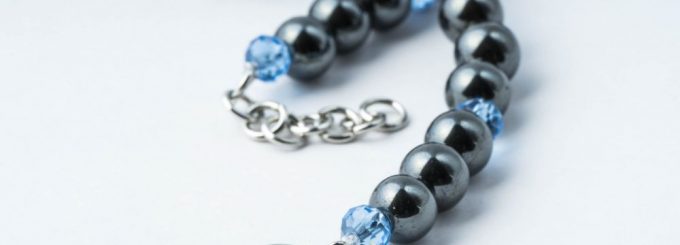Gemstone Spotlight: Hematite

Hematite is arguably one of the world’s most versatile gemstones, as it can be used in everything from oil paint to mascara, lipstick, cement, brick and industrial overcoat. But where does a hematite gemstone come from and why haven’t most people ever heard of it?
The Origins of Hematite
At first glance, hematite may look like little more than a rock with a dull appearance, but it’s anything but. After being polished and cut, it manifests an otherworldly shine with a smooth metallic finish. Additionally, because it has a high iron content, it provides respectable weight when hand held and can be purchased in larger sizes.
Hematite was known to the ancients, including the ancestors of modern man that lived as far back as 200,000 years, such as the Denisovians and Neanderthals. However, they lacked the technology to make full use of it and primarily applied hematite in the form of paint pigment or chalk. Man’s ability to cut and polish it is much more recent.
Because it is somewhat soft, hematite was popular among the Sumerians and other Ancient Mesopotamians who would carve it into cylinder seals and amulets. The Egyptians believed that hematite was capable of staunching bleeding which is why their warriors would carry it into battle and some Hematite talismans were discovered in Egyptian tombs. The Romans associated hematite with Mars, who was their war god.
Hematite Characteristics
Hematite has a Moh’s scale hardness which range from 5.5 up to 6.5. This means it’s sufficiently durable for the majority of jewelry applications though bracelets and rings might require additional protective settings and care during wear. Unlike other gems, hematite is usually not subject to any specific treatment other than polishing and cutting its rough material. An exception to this is Magnetic Hematite, which is not actually hematite, and the Rainbow Hematite specimens most of which are usually fake.
Hematite is not restricted to any one geographical location and can be found all over the world. For this reason it is used to source iron ore and Brazil produces lots of quality hematite gems as does South Africa, Morocco and certain areas of the United States. The British area of Cumbria is renowned for its Specularite variety as well as the Elba, the Italian island.
How to Wear and Care for Hematite
Hematite’s large size combined with its weight makes it well suited to usage as pendants, especially when one considers its lovely silvery shine. It also has an unusual luster that makes it ideal for Bohemian fashion. In terms of durability hematite should be considered moderate. You’ll want to store it in separate bags where it is kept away from other gems since it can be easily scratched, particularly by tougher gemstones like quartz.
Avoid using harsh chemicals or solvents while cleaning, and stick to water which is warm and soapy. Finally, you’ll want to remove hematite jewelry before engaging in physical activities, including gardening and housework. The best way to ensure the hematite you buy is authentic is to purchase it from a reputable dealer.


